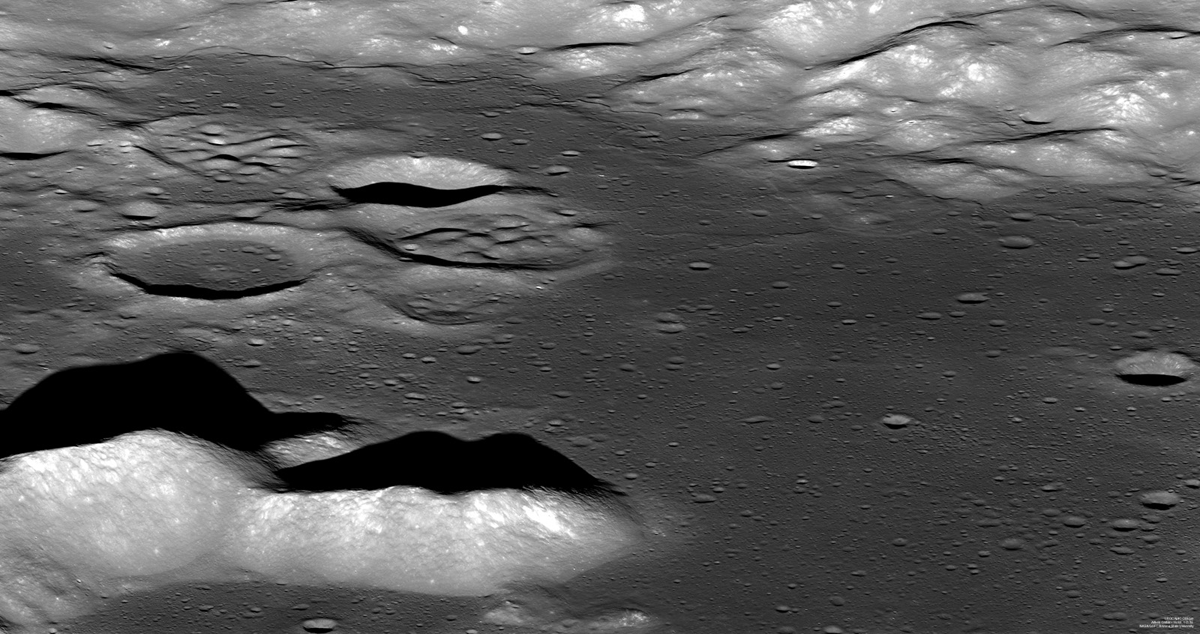[/caption]
When people look out of the corner of their eyes, they often don’t see things very clearly. But that’s not the case for the Lunar Reconnaissance Orbiter’s cameras. Occasionally LRO’s cameras are commanded to look off to the side at extreme angles, and the results, thought not frequent, are incredible. This stunning image of the central uplifts inside of Aitken Crater was taken on January 11, 2011. Here, LROC was looking over the southwest ridge of its central peak, and in the distance the lower portion of the northeastern walls of Aitken crater itself is just visible. To quote the Fred Haise character in the movie Apollo 13, this image makes me tempted to take a spacecraft down and “do some prospecting.” …
Mostly, LRO looks straight down for its images, but has collected a limited number of these oblique views of the lunar surface. They are very useful for engineering purposes, but also provide a unique view for visualizing key geologic features on the lunar surface — like Aitken. And usually, they are beautiful shots.
Aitken Crater(~135 km in diameter) is of interest because it is is one of the most geologically diverse settings on the farside. The floor of the crater is covered in mare basalt, which are quite rare on the lunar farside, and lunar scientists are still trying to figure out why. Aitken is also on the northern rim of the great South Pole-Aitken basin, the oldest and largest impact basin on the Moon and one of the oldest and largest impact basins in the whole Solar System! Further exploration of the South Pole-Aitken basin is one of the highest priorities for planetary science in the next decade.
Check out more images from this view of Aitken Crater at the LROC website, where you can “Zoomify” and take a closer look.

